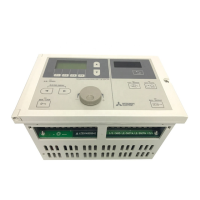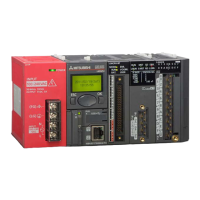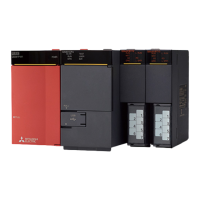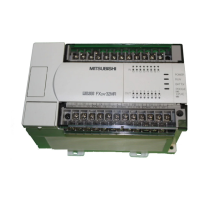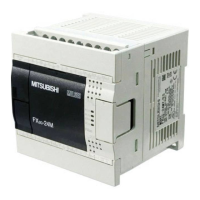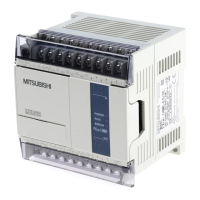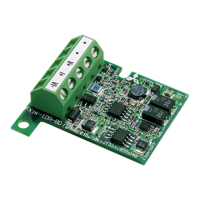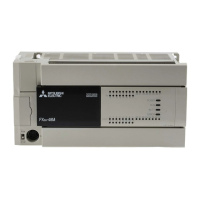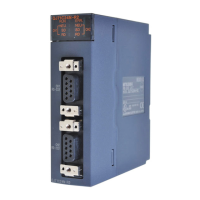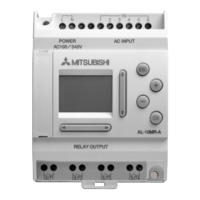78
CHAPTER 3 CPU MODULE FUNCTIONS
This chapter describes the functions for a CPU module.
3.1 Function List
The following table lists the functions of the LCPU.
(To the next page)
Item Description Reference
Boot operation
Transfers data stored on an SD memory card to the program memory or the
standard ROM at power-on or reset.
Page 71, Section 2.9
Constant scan Executes a program at a set interval regardless of its scan time. Page 80, Section 3.2
Watchdog timer (WDT)
Monitors operational delays caused by hardware failure or program error of the
CPU module.
Page 82, Section 3.3
Latch function Holds the device data of the CPU module. Page 83, Section 3.4
Initial device value Registers data used in programs without programs. Page 85, Section 3.5
Service processing setting Specifies the service processing count or time to be executed in END processing. Page 88, Section 3.6
Output mode at operating status change
(STOP to RUN)
Sets the output mode when operation status of the CPU module is changed from
STOP to RUN.
Page 93, Section 3.7
Input response time setting Sets input response time values for modules such as the input module. Page 94, Section 3.8
Error time output mode setting
Sets whether to clear or hold the output status to each module at the time of a stop
error of the CPU module.
Page 95, Section 3.9
PLC operation mode at H/W error setting
Sets a operation mode of the CPU module when a hardware error (CPU module
detects SP.UNIT DOWN) occurred in an intelligent function module.
Page 96, Section 3.10
File password 32 Prohibits writing/reading data to/from each file in the CPU module. Page 97, Section 3.11
Remote Password
Prevents unauthorized access from external devices using the built-in Ethernet
function or serial communication module.
Page 104, Section 3.12
Remote RUN/STOP Changes the CPU module status to RUN or STOP without using switches. Page 106, Section 3.13.1
Remote PAUSE
Changes the CPU module status to PAUSE without using switches. Outputs (Y) are
held.
Page 108, Section 3.13.2
Remote RESET Resets the CPU module when it is in the STOP status, without using switches. Page 110, Section 3.13.3
Remote latch clear
Clears latch data of the CPU module when the module is in the STOP status,
without using switches.
Page 111, Section 3.13.4
Scan time measurement Measures the execution time of the specified steps in a program. Page 112, Section 3.14
Program list monitor Displays the scan time and execution status of the program being executed. Page 114, Section 3.15
Interrupt program list monitor Displays the number of executions of an interrupt programs. Page 115, Section 3.16
Device monitor/test Monitors and/or tests the local devices of the specified program. Page 116, Section 3.17
External input/output forced on/off Forcibly turns on/off the external input/output of the CPU module. Page 118, Section 3.18
Executional conditioned device test Changes a device value for the specified step of a program. Page 121, Section 3.19
Sampling trace Continuously collects data of the specified device at a specified timing. Page 129, Section 3.20
Online change (ladder mode) Writes programs while the CPU module is in the RUN status. Page 136, Section 3.21.1
Online change (files) Collectively writes files while the CPU module is in the RUN status. Page 137, Section 3.21.2
Debug from multiple programming tools Enables simultaneous debugging from multiple programming tools. Page 142, Section 3.22
Self-diagnostic function Self-diagnoses the CPU module to see whether an error exists or not. Page 145, Section 3.23
Error clear
Clears continuation errors by error type. User can specify continuation errors to
clear.
Page 150, Section 3.24
LED control function
Sets the timing to turn off and indication of the LEDs located on the front of the CPU
module.
Page 153, Section 3.25
Module error collection function Lists descriptions of errors occurred in the intelligent function module. Page 155, Section 3.26

